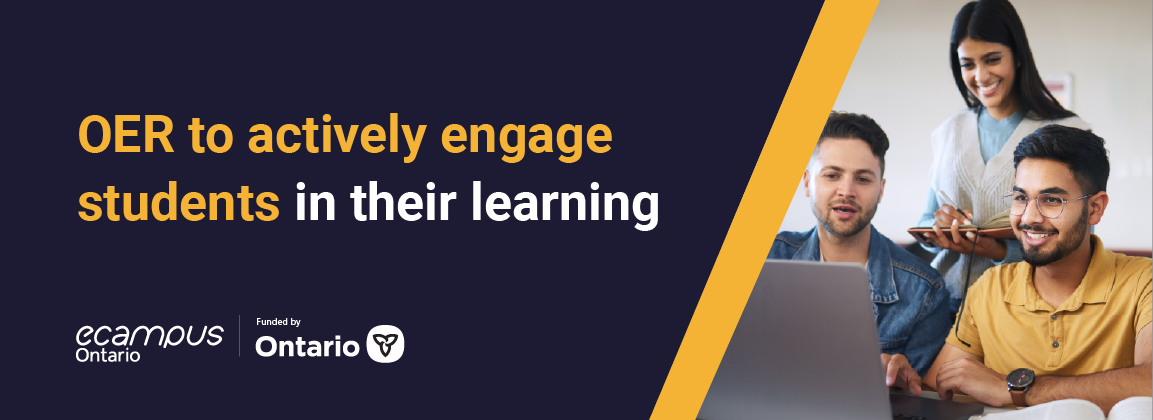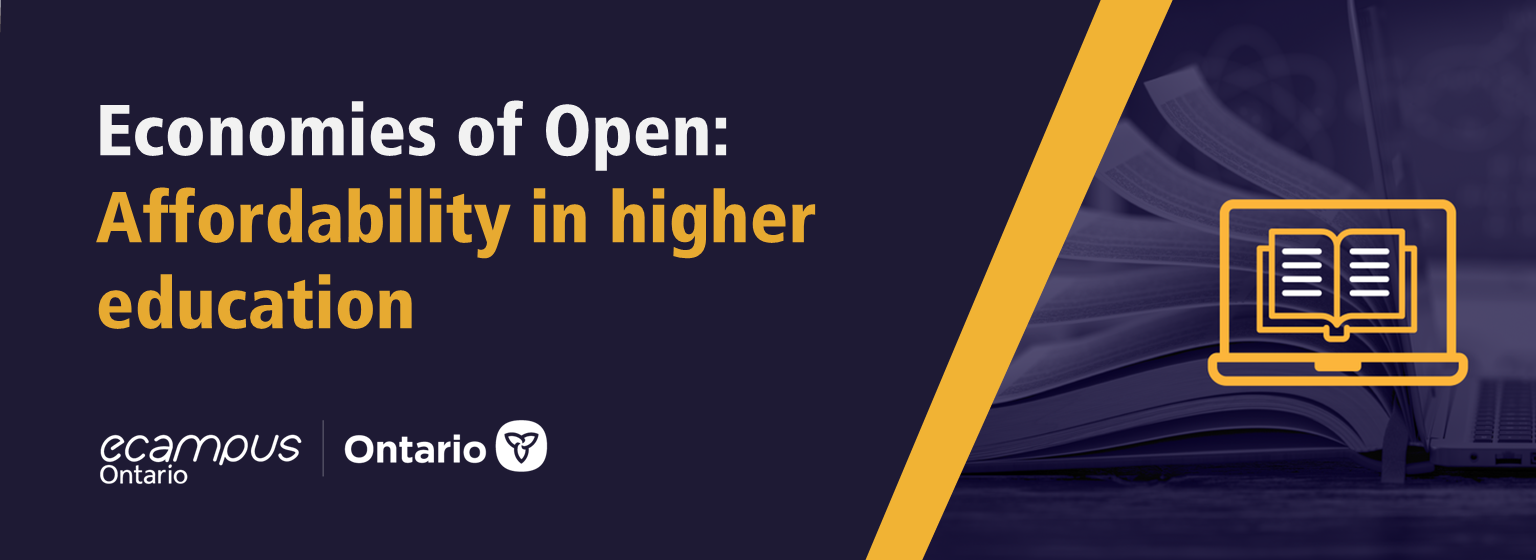
Supporting remote teaching with open resources
By Lillian Hogendoorn
Acting Manager, Digital Access & OER
As we move into another semester of remote learning, students across Ontario continue to face challenges accessing the required resources they need to successfully complete their coursework. Faculty, instructional designers, librarians, and other postsecondary staff have worked tirelessly to support students through this difficult transition. Many educators have looked to new digital tools or platforms to enhance the online learning experience, whether assigning a new digital text or engaging a new platform for collaboration.
At last month’s virtual Open Education Global conference, eCampusOntario’s Chris Fernlund moderated a keynote student panel, asking students to reflect on this transition to remote learning and the ways in which open educational resources and practices have been used or could be used to alleviate these struggles. Recent graduate Ali Kazmi reflected on a conversation he had with a first year student. “What she was telling me,” said Kazmi, “was that because there was so much inconsistency with how courses were being prepared, where you’ll have some courses where you might need to download three different platforms for your books … just to get access to something which could not be sourced because of this transition.” The other panelists nodded in agreement, adding that this is happening in not just one course, but across courses. The solution to this problem? Students think it might be OER.
While open educational resources have a strong reputation for saving students money by replacing paid texts with free resources, open resources can also benefit students in an increasingly difficult-to-navigate digital world. Open resources are generally platform-agnostic. They can be read in a browser, through a PDF or e-Reader, or even printed for those who prefer to read on paper. No login or password is needed to engage with the resource, making it easy for a learner to focus on learning.
Open resources are also available to students from the first day of their course with no end date. Students don’t have to wait for the book to be in stock, or for their next paycheque to be able to afford access to these resources. And the Creative Commons licenses associated with OER allow learners and educators to always retain a copy of the resource, making it a valuable tool for learning even after the course has ended.
Using open resources not only benefits learners, it also benefits educators and those who work to support educators. For example, libraries are often places students can access course materials, even if they cannot afford to purchase the materials. However, Guelph Libraries notes, “Approximately 85% of existing course textbooks are simply unavailable to libraries in any format other than print.”
As you prepare for the winter term, consider if adopting or adapting an open educational resource might support your learners. Through the eCampusOntario Open Library you can discover over 580 openly licensed educational resources that are available for you to adopt to support or supplement your teaching. Many of these resources have accompanying test banks, slide decks, and assignments to make your adoption as easy as possible. These resources can also be adapted for your own needs to add relevant context for your students, include additional content, or even add more current information or examples.
If you are interested in using an open educational resource, the Open Library team at eCampusOntario is here to support you. You can get in touch through the Open Library website or connect with other educators interested in open education through the Ontario Open Library Network.
And, if you are using open resources this semester, don’t forget to let eCampusOntario know by clicking this link.



